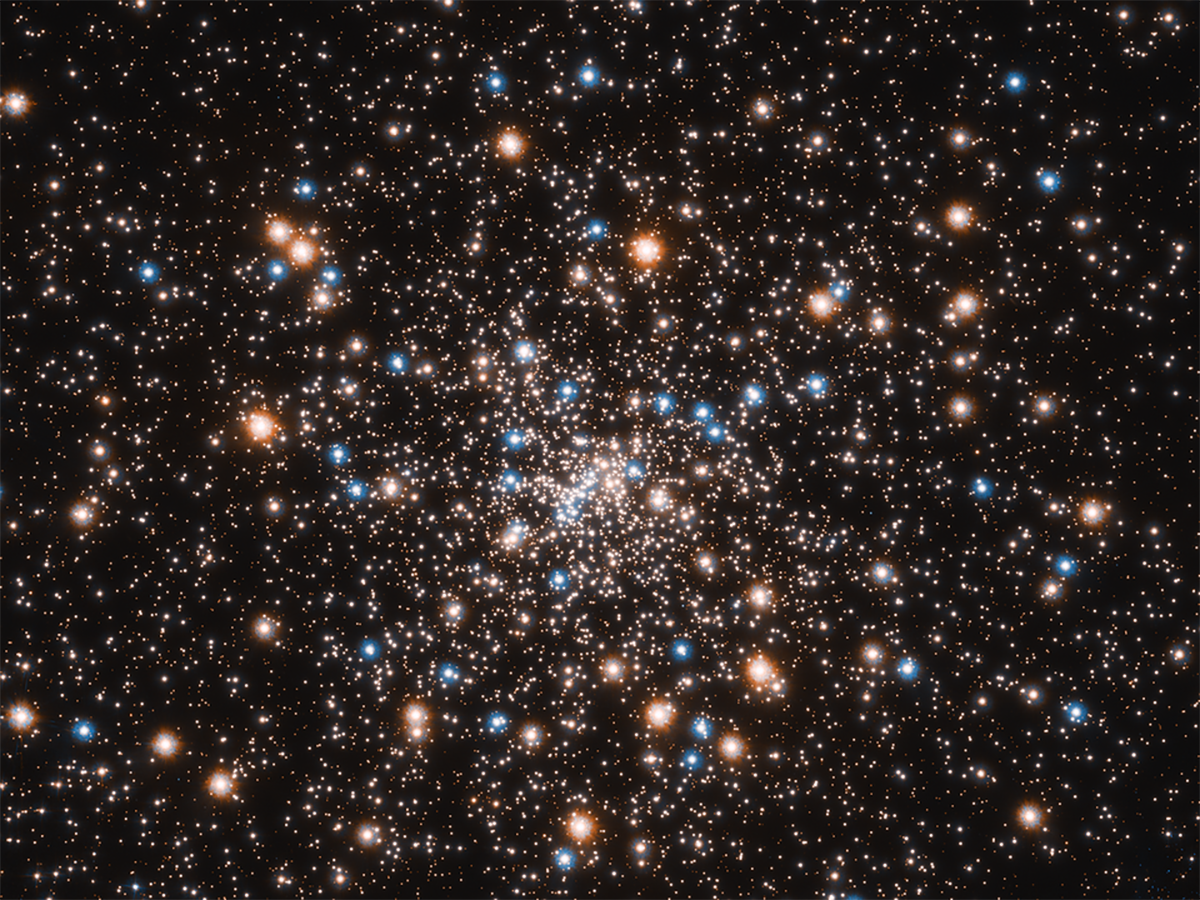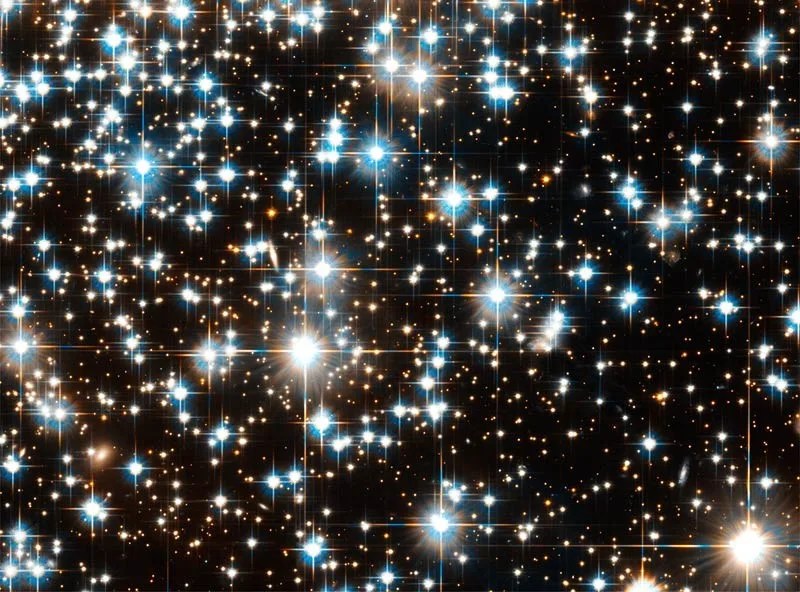Caldwell 86
Caldwell 86 is a true cosmic relic at a staggering 13.4 billion years old.
Distance
7,800 light-years
Apparent Magnitude
5.7
constellation
Ara
object type
Globular Cluster

Globular clusters are ancient collections of hundreds of thousands to millions of sparkling stars. Caldwell 86 is one of the nearest globular clusters to Earth. Its closeness, combined with Hubble’s sharp vision, allowed astronomers to measure the cluster’s parallax — or how much it appears to move in the sky as Earth travels from one side of the Sun to another. This had never been achieved for a globular cluster before, and it provided a precise measurement of C86’s distance from Earth: 7,800 light-years. Knowing the cluster’s distance and the properties of its stars, astronomers could then determine the cluster’s age, finding that Caldwell 86 is a true cosmic relic at a staggering 13.4 billion years old. The universe itself came into being about 13.8 billion years ago, making the stars in C86 some of our galaxy’s first homesteaders.

The old stars that populate Caldwell 86 and other globular clusters tend to be low in elements other than hydrogen and helium. They are not good candidates for stellar systems that could support life, because planets, which are built from rock and metals, are not likely to form in globular clusters. Heavier, planet- and life-building elements are manufactured in the hearts of massive stars and recycled into the cosmos when they die in supernova explosions. Later generations of stars, like our Sun, can then benefit from those recycled materials.
In this Hubble image, which is a composite of exposures acquired by the Advanced Camera for Surveys in 2005 and 2006, the blue stars have high temperatures while the red stars are cooler. The image displays an area that is about 15 light-years across, covering the central part of the cluster.
Also cataloged as NGC 6397, C86 has a magnitude of 5.7, making it easy to spot with binoculars. Under dark skies, sharp-eyed observers might even be able to spot it without any aid at all. The view is spectacular through a medium-sized telescope, with the cluster resolving into stars of varying brightness. C86’s location in the constellation Ara makes it most easily visible from the Southern Hemisphere in the winter, although Northern Hemisphere observers at low latitudes can spot it just above the southern horizon in the summer. The cluster was discovered by French astronomer Nicolas-Louis de Lacaille in 1751 during an expedition to the Cape of Good Hope in South Africa.
For more information about Hubble’s observations of Caldwell 86, see:
Hubble Makes the First Precise Distance Measurement to an Ancient Globular Star Cluster
How White Dwarfs Get Their 'Kicks'
Hubble Sees Faintest Stars in a Globular Cluster

Glossary
Globular Cluster - A spherical group of stars that are gravitationally bound to each other, with most of the stars concentrated at the cluster’s center.
Magnitude - The brightness of an astronomical object, represented by a number; bright objects have low numbers on the magnitude scale, while dim objects have high numbers.
Supernova - The explosion of a massive star at the end its life, which ejects material into space and causes the star to temporarily brighten in our sky.
White Dwarf - The core of a dead Sun-like star whose outer layers have been expelled into space.
Explore Hubble's Caldwell Catalog
The following pages contain some of Hubble’s best images of Caldwell objects.

Caldwell 1
Also known as NGC 188, this group of stars formed from a large cloud of gas making the stars roughly…

Caldwell 2
This shell of gas is expanding outward, away from the dying star within.

Caldwell 3
This barred spiral galaxy was first spotted by British astronomer William Herschel in April 1793 in the constellation Draco.




